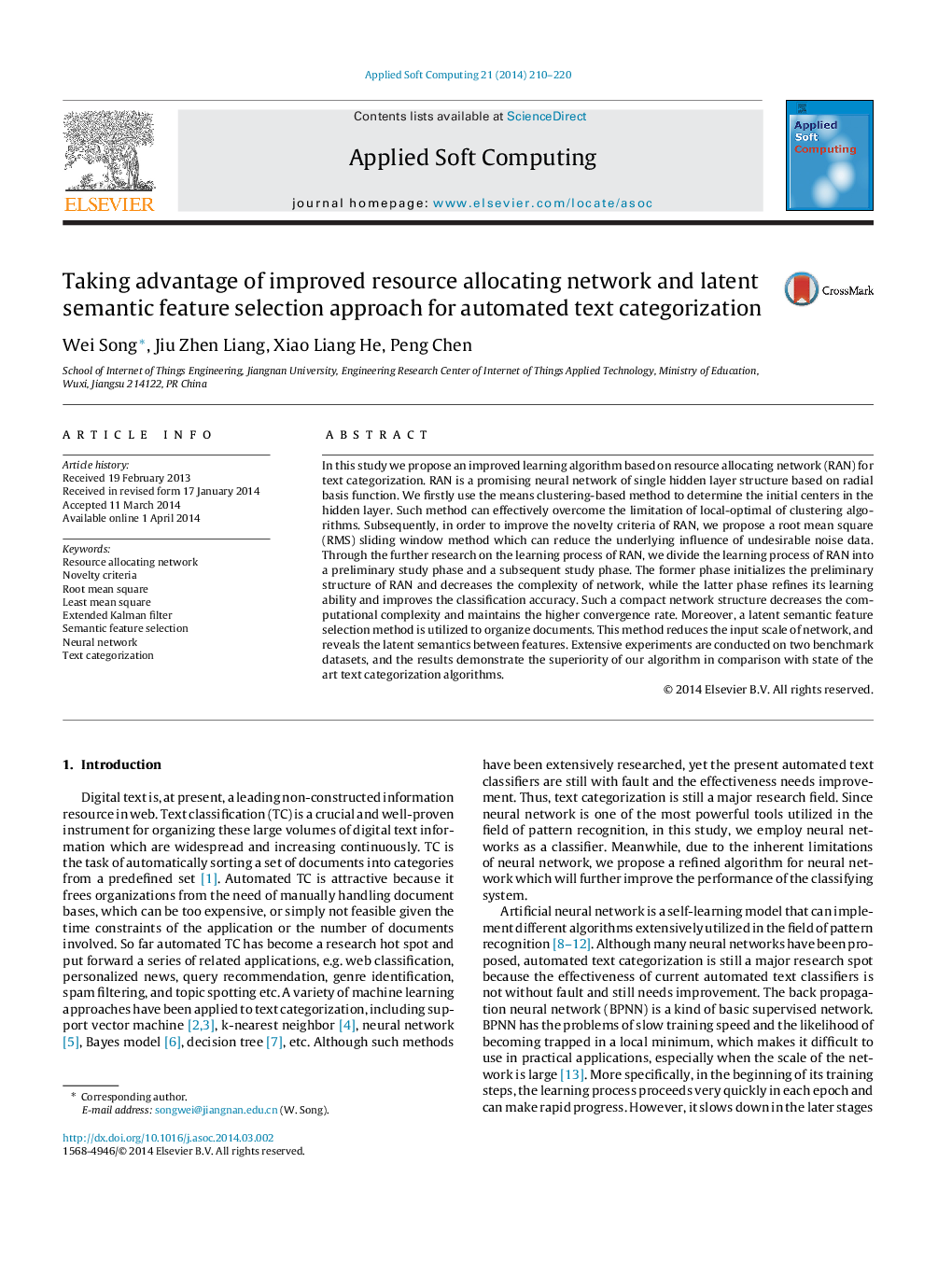| Article ID | Journal | Published Year | Pages | File Type |
|---|---|---|---|---|
| 495454 | Applied Soft Computing | 2014 | 11 Pages |
•We utilize the double means clustering-based method to determine the initial centers in hidden layer.•We propose the RMS sliding window approach to reduce the underlying influence of initial noise data.•The former phase of RAN initializes the preliminary structure of RAN, and the latter phase refines its learning ability.•The experiment results show the superiority of our method comparing with state of the art categorization algorithms.
In this study we propose an improved learning algorithm based on resource allocating network (RAN) for text categorization. RAN is a promising neural network of single hidden layer structure based on radial basis function. We firstly use the means clustering-based method to determine the initial centers in the hidden layer. Such method can effectively overcome the limitation of local-optimal of clustering algorithms. Subsequently, in order to improve the novelty criteria of RAN, we propose a root mean square (RMS) sliding window method which can reduce the underlying influence of undesirable noise data. Through the further research on the learning process of RAN, we divide the learning process of RAN into a preliminary study phase and a subsequent study phase. The former phase initializes the preliminary structure of RAN and decreases the complexity of network, while the latter phase refines its learning ability and improves the classification accuracy. Such a compact network structure decreases the computational complexity and maintains the higher convergence rate. Moreover, a latent semantic feature selection method is utilized to organize documents. This method reduces the input scale of network, and reveals the latent semantics between features. Extensive experiments are conducted on two benchmark datasets, and the results demonstrate the superiority of our algorithm in comparison with state of the art text categorization algorithms.
Graphical abstractFigure optionsDownload full-size imageDownload as PowerPoint slide
